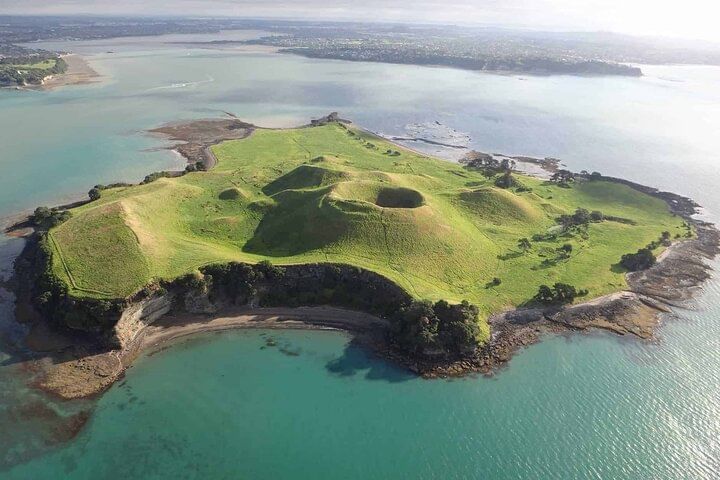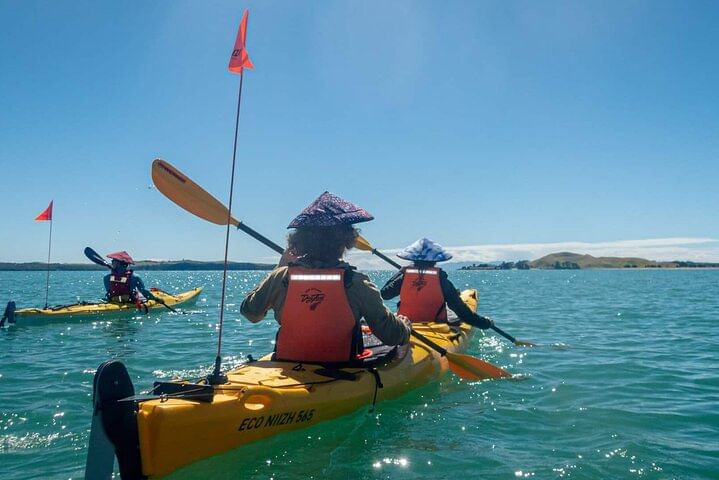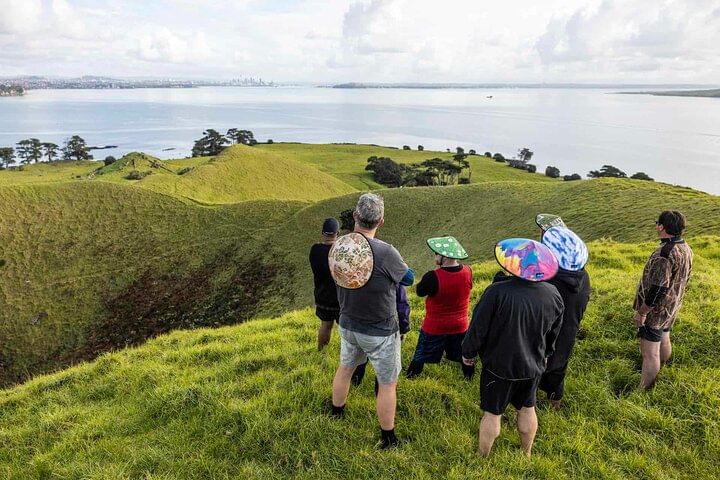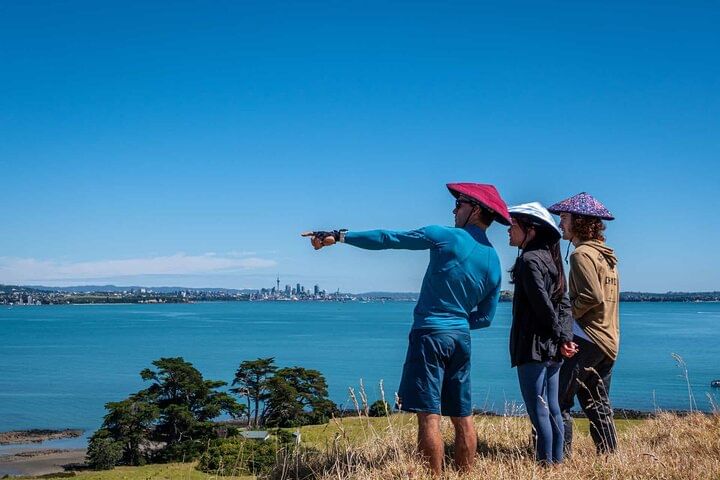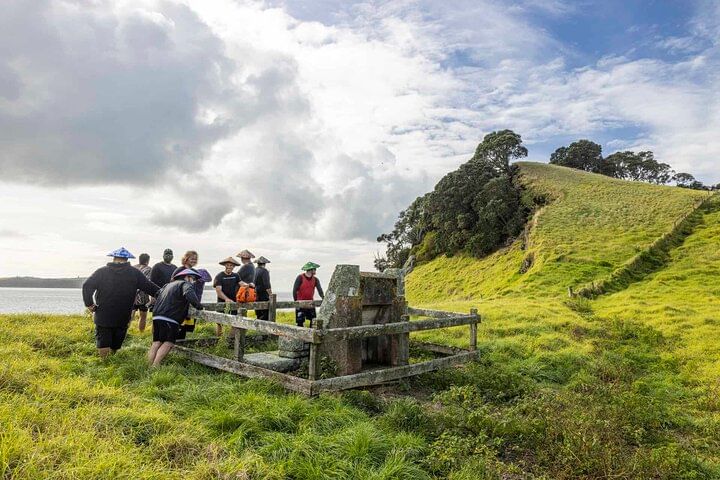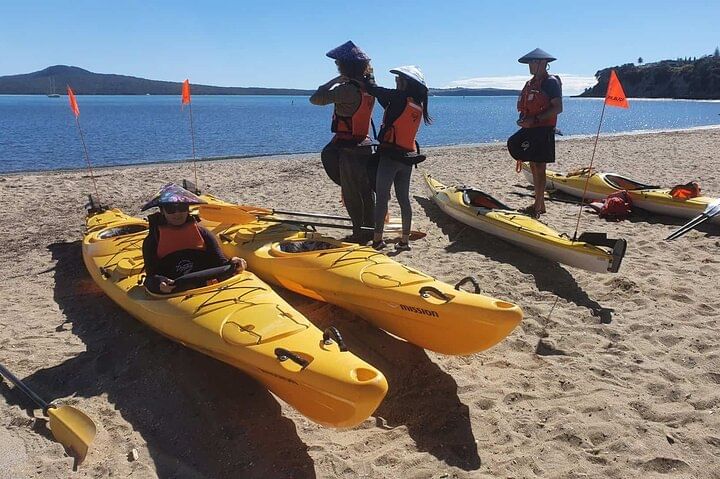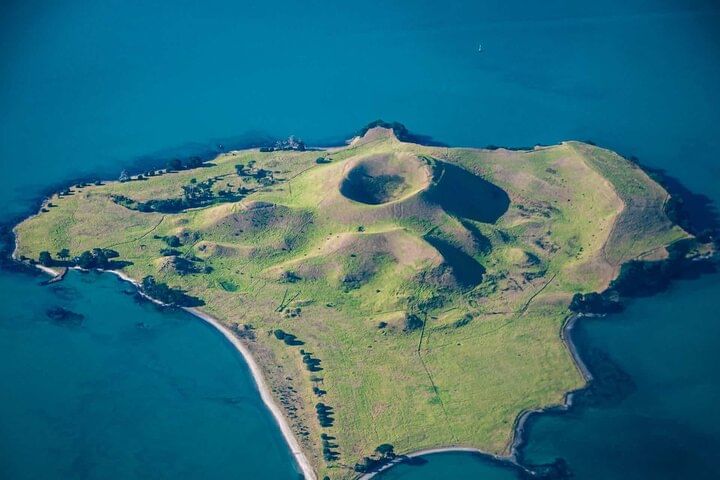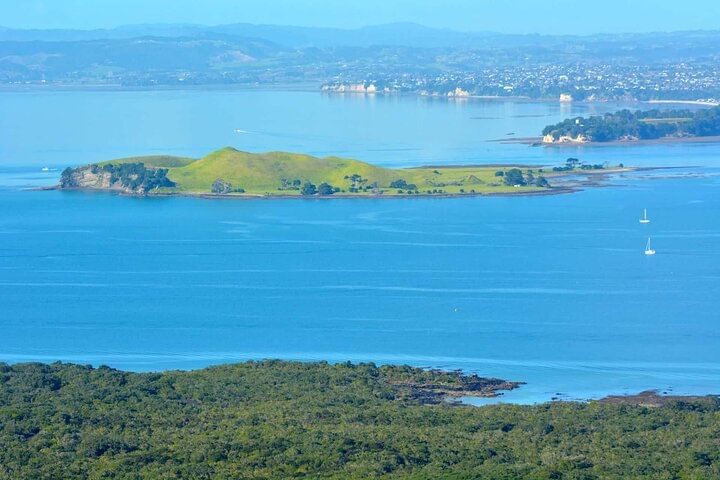Browns Island Motukorea Sea Kayak Tour
4 hours
Easy
Embark a guided sea kayak tour from Auckland to Browns Island that is perfect for beginners. Enjoy the scenic Hauraki Gulf and Waitemata Harbour vistas and explore the picturesque volcanic island.
In 1909, New Zealand's aviation history took flight as Alex and Claude Barnard launched a homemade flying machine from the island's peak, marking the nation's first aeroplane trials.
Browns Island is a volcanic cone from an eruption 25,000 years ago, part of the active Auckland Volcanic Field. Now uninhabited, it's a recreational reserve turned wildlife sanctuary, home to native birds like tūī, pūkeko, silvereye, as well as unique wildlife such as skinks and geckos.
For students and researchers, Browns Island offers educational opportunities in volcanology, geology, and environmental conservation, making it an ideal field study destination.
What's included?
- Food & drinks
- Coffee and/or Tea
- Baked good (muffin or biscuits)
- Life jacket
- Kayak,
- Paddle
- Experienced and Knowledgeable Guide
Exclusions
Please note
Hazards and Risks
Adventurous activities involve inherent hazards and potential risks, often coupled with the severity of hazards and the likelihood of risks.
Hazard: ‘anything’ that can cause harm. Hazards might be rocks, trees, water (drowning, floods), wildlife, humans, heights (falls, falling objects), machines, tools, weather (hypothermia).
Risk: the potential of something happening. Risks could be death, serious injury and/or emotional harm.
Adventurous activities offered by SNM could be dangerous if they’re not approached with care and responsibility. Participation in such activities is voluntary and not compulsory.
Hazards and risks are managed using a hierarchy of controls to choose the most effective control measures starting with elimination, then minimisation, substitution and isolation. Further measures take on administration controls and personal protective equipment if risks and hazards remain.
What to bring
- Clothing
- Shorts / Pants
- Swimwear
- Socks
- Thin merino shirt / thermal shirt
- Fleece / woolen / synthetic jumper
- Wind and Rain-proof Jacket
- Warm beanie / sunhat
- Neck warmer / scarf
Equipment
- Footwear
- Sunglasses
- Personal medication
- Water bottle
- Backpack to put all of the above in

